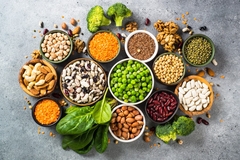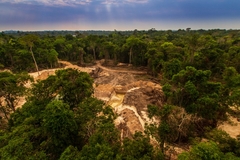
- Industry news
Industry news
- Category news
Category news
- Reports
- Key trends
- Multimedia
- Journal
- Events
- Suppliers
- Home
- Industry news
Industry news
- Category news
Category news
- Reports
- Key trends
- Multimedia
- Events
- Suppliers
MARTINI Energized by Hydropower from the Italian Alps

07 Oct 2014 --- From the breathtaking magnificence of the Northern Italian Alps comes pure power – hydroelectric power – that helps drive sustainable production of the world-favorite MARTINI vermouths and sparkling wines.

"Hydropower – the production of electrical power through the use of falling or flowing water – is one of the cleanest ways to produce electricity without significant impact to the environment," says Fulvio Baratella, MARTINI Technical Service Manager, in charge of environmental engineering at the MARTINI facility.
In the village of Pessione, just outside Turin, Italy, the largest MARTINI facility in the world has been in operation for more than 150 years. Since 2010, almost all of the electricity consumed at the facility comes from renewable sources, including hydropower. "With the use of renewable energy, we have cut CO2 emissions for the brand by almost a third, equivalent to removing 700 cars from the highway," explains Giorgio Castagnotti, MARTINI Operations Director, responsible for all operations at the Pessione site. "In addition to the more than 30 percent reduction in greenhouse gas emissions, MARTINI has cut its water use by four percent since 2006."
Here's how the hydroelectricity is generated: Water from the mountain streams in the nearby Alps flows into rivers winding through Italy's Aosta valley. Gruppo CVA, a leading producer of hydropower in Italy, uses hydraulic turbines to convert the water flow into hydroelectric energy for MARTINI production.
However, the process does not stop there. "Once the water passes through the plant, generating clean energy, it continues flowing down toward the valley. The water continuously moves through a series of hydroelectric facilities downstream. They all use the same process over and over to generate energy," explains Alberto Sartori, Commercial Director of CVA Trading.
The CVA facility, originally built in 1921, was established with conservation top-of-mind. CVA wanted to ensure its water sensitive facility didn't use chemical-based paints so it designed an interior adorned with hand-stenciled graphite and cobalt shields instead of paint. The building also rests within a designated sanctuary that offers protection to wildlife in harsh winter months.
MARTINI, as part of the Bacardi family of brands, maintains an enduring commitment to sustainability. Since 2006, when the Company began tracking its global impact on the environment, Bacardi has reduced nonrenewable energy use by 27.7 percent and decreased its greenhouse gas emissions from production by 28.5 percent. Building on current programs and efficiencies that reduce its environmental impacts, the Bacardi Limited "Good Spirited" sustainability program sets specific goals in three areas to help the Company reach its vision of a net zero impact:
- Responsible Sourcing: Bacardi strives to obtain all raw materials and packaging from sustainably sourced, renewable or recycled materials while maintaining or enhancing the economic status of growers and suppliers. By 2017, the goal is to obtain 40 percent of the sugarcane-derived products used to make its rum from certified, sustainable sources – and 100 percent by 2022. This pledge from Bacardi is an industry first.
- Global Packaging: Bacardi commits to use eco-design to craft sustainability into its brand packaging and point-of-sale materials. By 2017, Bacardi plans to reduce the weight of its packaging by 10 percent and achieve 15 percent by 2022.
- Operational Efficiencies: Bacardi continues to focus on reducing water use and greenhouse gas (GHG) emissions with a 2017 goal to cut water use by 55 percent and GHG emissions by 50 percent. In addition, Bacardi aims to eliminate landfill waste at all of its production sites by 2022.











